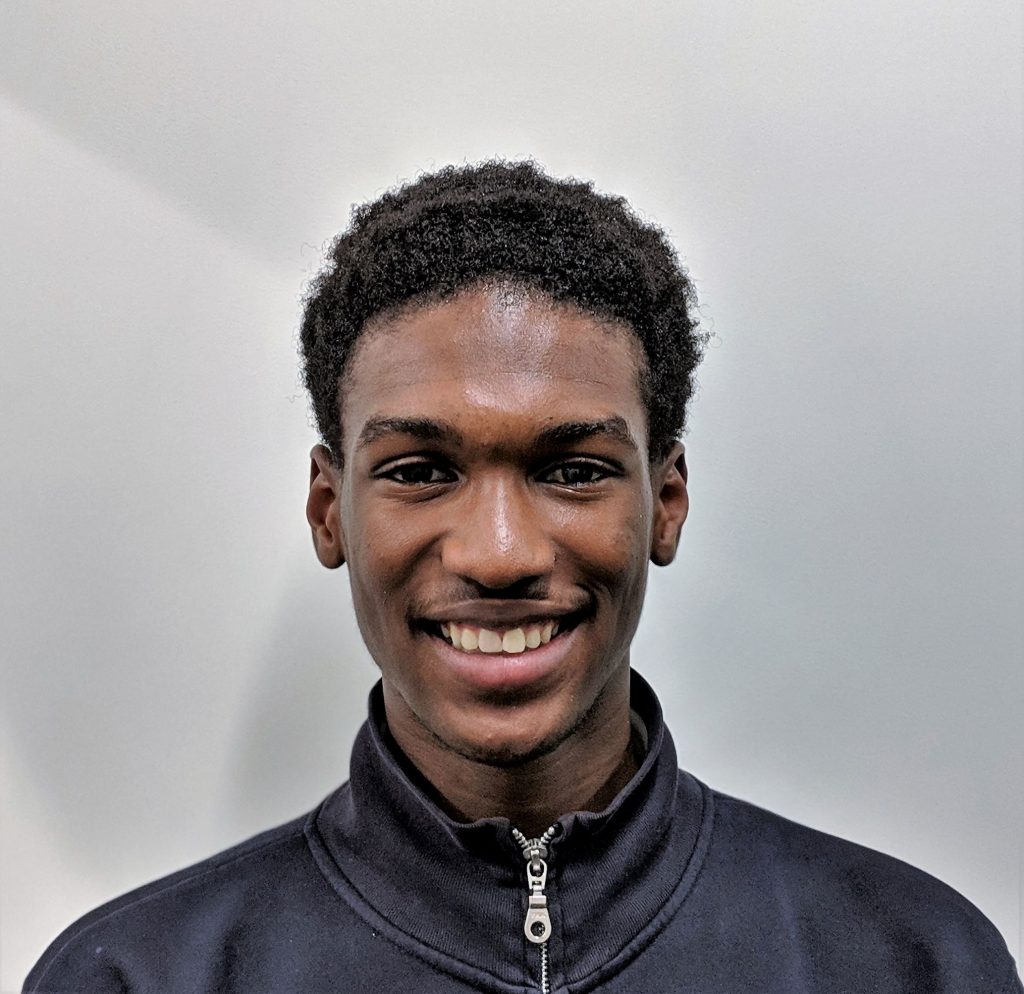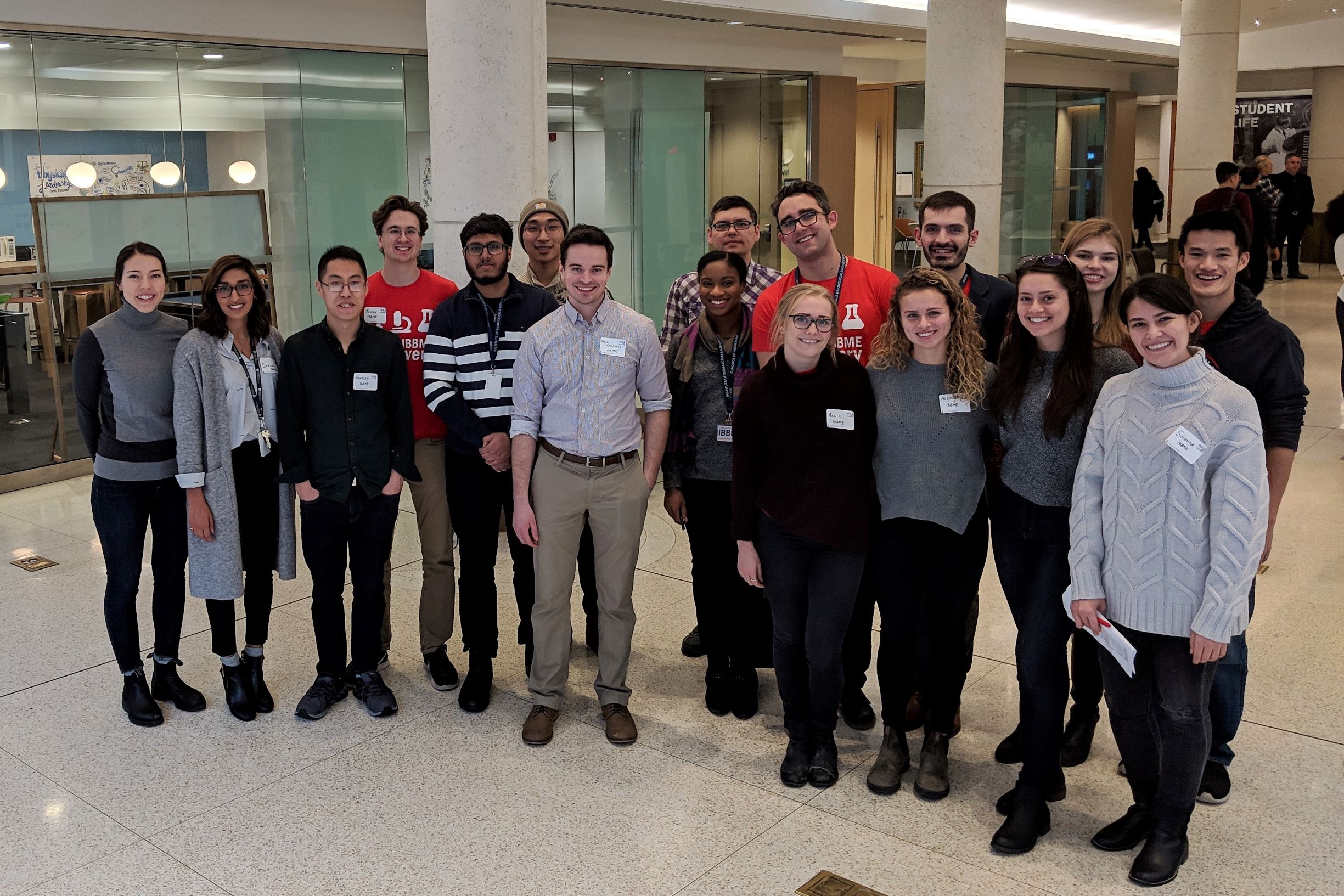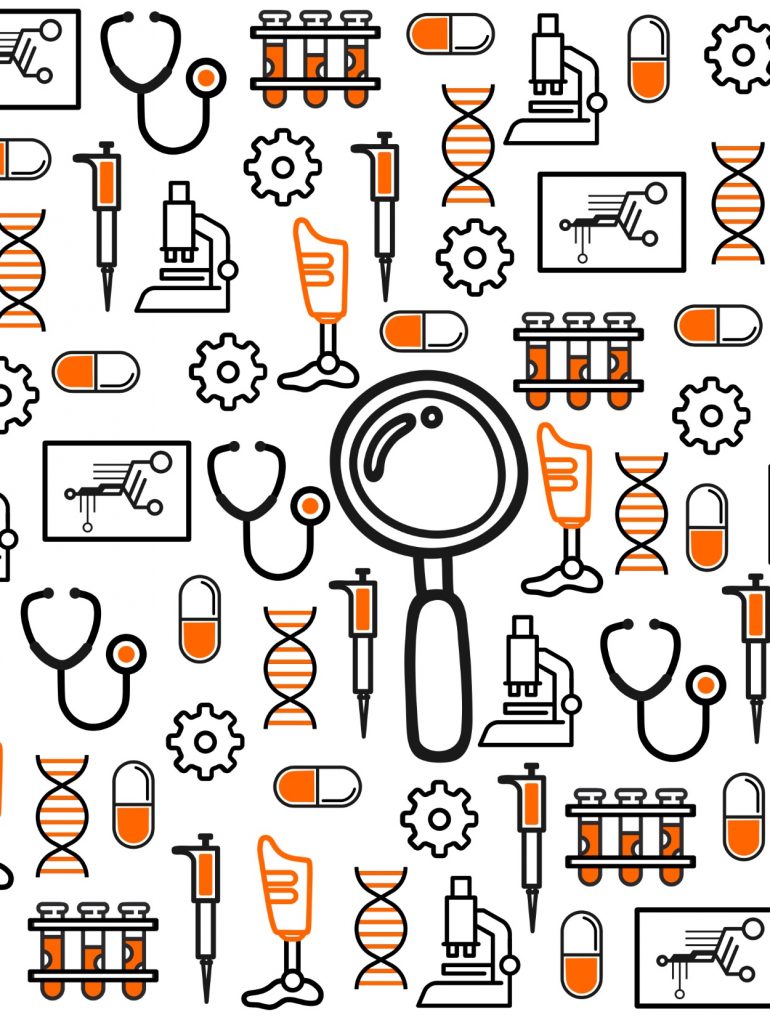High school students from George Harvey Collegiate Institute (GHCI) were busy performing experiments in the IBBME design studio located in the Mining Building. Today they are learning about how the application of force affects the design of canes used by rehabilitation patients. Quevawne, a grade 11 student from GHCI, was eager to share his experience. “When I talk to my friends who are going to different schools, they were like ‘where are you going on Friday?’ and I say, ‘I get to go to the University of Toronto.” Quevawne said with a proud smirk on his face. “I brag a little, but not too much.”
The IBBME Discovery Program started in 2016 as an outreach project to bridge the transition between secondary and post-secondary education, by bringing Science, Technology, Engineering, and Math (STEM) to socio-economically challenged communities. The vision of the project is to give high school students the opportunity to conduct hands-on experiments using research-grade equipment and facilities located at the University of Toronto. Founded by Locke Davenport-Huyer, Genevieve Conant (IBBME 1T7) and Dr. Andrey Shukalyuk, the Discovery program had rapidly grown over the past 2 years to include 4 educators, 15 graduate student instructors, and a University of Toronto faculty member. “The program formed from an idea of connecting high school learning to university in a meaningful way,” Mr. Davenport-Huyer said, “As with any change in thinking, getting this off the ground involved the formation of strong collaboration between our partners with the Toronto District School Board, who provide essential insight into effective educational strategies.” Since 2016, the Discovery program has welcomed more than 200 high school students through the doors of the University of Toronto.
What motivated Locke to start this program was the desire to bring STEM across the socio-economic barriers, while focusing on exposing students to the hands-on inquiry of scientific discovery. “I think it’s important to give everyone a chance to thrive,” said Mr. Davenport Huyer, “expensive research equipment is not often accessible to high school students. This learning experience gives them a chance to try new things.” The program also emphasizes equity of student participation, ensuring that entire class cohorts participate in the program with the hope that a differing learning environment will inspire student interest in STEM as an extension to the knowledge-focused delivery of the high school classroom.
Currently, the structure of the program is as follows: as an element of their curriculum, senior high school students (grade 11 and 12) participate in 4 separate, full day sessions at 3 different laboratory locations, hosted by IBBME. During these sessions, students are split into groups of 4, while under the mentorship of a graduate student instructor, they execute a subject specific (Biology, Chemistry, or Physics) term project over a 2-month span. To date, these projects have ranged from designing an antibacterial gel to optimizing walking canes, linking relevant curriculum knowledge to cutting edge biomedical engineering topics. Projects culminate in a final poster session where the students present their work to the public, an opportunity that is atypical for many high school students.
Many of the students involved have never stepped inside a university before. “It’s amazing that we are the only school in the Toronto District School Board that has this program. It just makes the experience that much more special.” Quevawne said. For other students, performing hands-on scientific experiments dispels some of the intimidating auras surrounding a university institution. Obria, a grade 11 student, described her initial experience as a Discovery program attendee. “The first time I came [to Discovery], I was intimidated by the labs. I didn’t know what to do. But now we are here again, we really get to do things on our own and actually think. I enjoy that because we have more control over what we are doing.” Obria said. The students’ fondness is reflected in their diligent attendance to the program, thus far the attendance rate is close to 100%.

We really get to do things on our own and actually think. I enjoy that because we have more control over what we are doing. – Obria

It’s an experience to see how big [the University] is instead of being secluded in your own little area. I like that. – Quevawne
The continued success with GHCI has motivated program expansion to nearby high schools in the Toronto District School Board in Winter 2019. In preparation for implementation, Western Technical High School has dispatched teachers – including Vice-Principal Kim Woods and science lead Teresa Frost – to shadow how laboratories are run in one of the sessions. “[GHCI] have been through this for a couple of years, and we want to see how it works,” said Vice-Principal Woods, “This program will inspire kids and give them the confidence that STEM will be an actual possibility for them.” Expanding this program to other schools broadens its impact, and will create a sense of community.

The IBBME Teaching Lab has 3,000 square feet of laboratory space that is located on the third floor of the Mining Building.
Despite the growth in participating student numbers, this initiative has remained free of cost to the high schools. Equipment and material cost has been compensated by IBBME or donated by faculty members. In September, the Discovery program has received more than $22,000 in NSERC PromoScience funding, a government initiative aimed at providing financial support in promoting the understanding of science and engineering to young Canadians.

The success of the Discovery program has been disseminated at international conferences and is also expected to be quantified and published in scientific journals. Dr. Dawn Kilkenny is the faculty liaison who had supported the ongoing efforts of Discovery. Attendance rates, grades, and continuance into STEM fields, are some of the collected metrics. “We have disseminated our findings to communities of practice. the Canadian Engineering Education Association, the Biomedical Engineering Society, and the American Society for Engineering Education and have received a lot of positive feedback.” said Dr. Kilkenny, “The next step is expanding this into a multi-school initiative and have several University of Toronto departments involved.”


